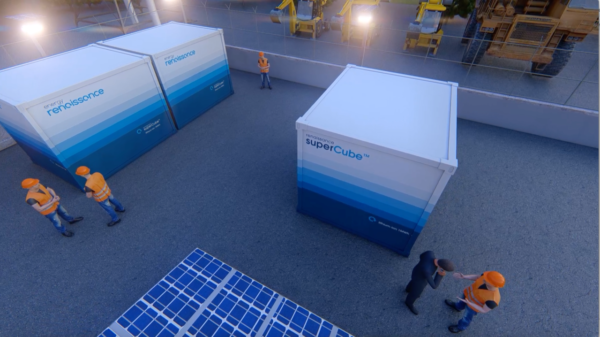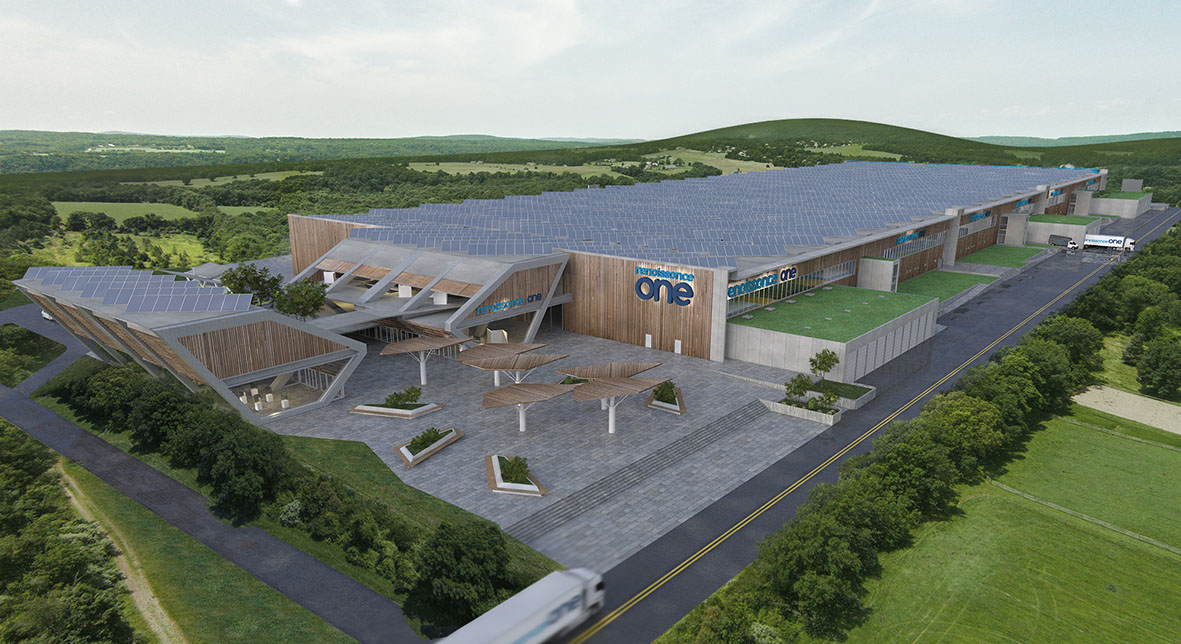There’s been a lot of talk in Australia about accelerating out of the COVID-19 pandemic by jumpstarting the country’s advanced manufacturing base. Energy Renaissance has battery technology for Australian conditions, and therefore ripe for export to other “hot” markets, in development. Last week it received a co-funding grant of $246,625 from the Advanced Manufacturing Growth Centre (AMGC) to accelerate its plan for producing world-leading lithium-ion storage solutions in country.
Energy Renaissance batteries, developed in partnership with Cadenza — a US-based leader in design and manufacture of safe, efficient, energy-dense storage cells and platforms — will solve two fundamental issues of Li-ion energy-storage, the company’s Managing Director, Mark Chilcote tells pv magazine.
“Lithium-ion batteries have a propensity to catch fire,” he notes, “and in hotter climates, 30% of a battery’s output is used to cool itself.”
Cadenza technology addresses both issues at the cell level, and Energy Renaissance has “spent a lot of time over the past couple of years in applying our own internal IP to how we package the Cadenza cell” to further address high-temperature installations and other industry specific requirements, Chilcote says.

Image: Energy Renaissance
Energy Renaissance will match the AMGC grant dollar for dollar, and use the funding to refine its products, which are destined to power industrial electric vehicles at one end of the scale, and provide multi-megawatts of grid-scale renewable energy storage at the other.
Battery “packaging” for mining vehicles and equipment, for example, will support fast installation and change-out; for grid-scale batteries Energy Renaissance 1 MWh superCubes can be daisy-chained into the desired capacity in a fan-cooled housing.
Advancing the energy transition at home and abroad
“Australia has an opportunity to lead the world when it comes to energy transition while adding value to our abundant natural resources,” said Dr Jens Goennemann, Managing Director of AMGC in announcing the grant.
Growing the economic benefits of Australia’s lithium-ion battery materials industry through a local supply chain is one of the core aims of the Energy Renaissance venture.
The Lithium Ion Battery Value Chain: New Economy Opportunities for Australia report released by Austrade in 2018 identified that the country can supply 9 out of 10 mineral elements required for Li-ion battery (LiB) production.
In addition, various reports this year predict an explosion in the LiB market. Global Market Insights for example, projected an increase from US$40 billion in 2019, to US$76 billion in 2026, driven by a number of key factors, including “ongoing transition toward renewable energy generation technologies”; and rising demand from industry as global governments mandate diversification of industrial energy consumption, prompting, among other changes, the switch to “light EVs and forklifts to carry out operations within the industrial complex.”
A recent study by GlobalData reported the growth in grid-connected renewable energy generation in the Australia-Pacific saw the region take up 45% of the world’s installed battery storage capacity in 2018, and that this trajectory was likely to continue.
Energy Renaissance is positioned to take advantage of such trends as it targets Southeast Asia and the Middle East for exports, and sidesteps the passenger EV market: “The big battery providers, the Samsungs of the world, are being completely consumed by the EV market”, says Chilcote, which leaves opportunities in other applications.

Image: Energy Renaissance
LiB-erating Australian manufacturing and research capabilities
Energy Renaissance’s growth plan will see it export 60% of the 1.3 GWh capacity from its envisioned Renaissance One advanced manufacturing facility within five or six years; contributing a forecast AU$3 billion to Australia’s gross domestic product.
By then it will employ some 1,300 workers, and the company’s modelling shows that its manufacturing activity has the potential to create five jobs in upstream industries such as mining, for every employee hired.
Part of the AMGC grant funding will be directed towards design of Renaissance One’s automated production line, set to start rolling in Q1 of 2021. After testing and smoothing of processes, including the deployment of robotics and automated quality-control systems, Chilcote envisages achieving commercial production in Q2.
Automation that reduces labour content, proximity to material supply chains, and the increased capacity of the heat-resilient batteries are among factors that have been calculated to make manufacture of the product in Australia highly competitive with batteries produced in countries with low labour costs.
Chilcote also cites proximity to Australia’s R&D excellence in universities and research institutes as a plus for setting up onshore manufacturing. Energy Renaissance is already partnered with CSIRO, and intends to “partner with universities, with graduates and with people doing their doctorates”, says Chilcote, who adds, “Australia has some of the best tertiary qualified resources, and we can benefit from that.”
The location of the company’s first production facility will be decided in the next couple of weeks, Chilcote told pv magazine, “We’re in discussion with a couple of state governments about the potential location.”
Sovereign supply opens the market for defence
Energy Renaissance is also developing the computer system that controls and monitors its batteries, which it intends to manufacture in Australia.
The resulting sovereign supply of the entire battery system will create opportunities to provide the Australian defence forces with their energy storage needs.
It has been five years since Chilcote, a former UGL executive, and a number of engineering and corporate colleagues first sought to benefit the environment and the Australian economy with a new venture. Now, he says, “We’re on the eve of converting a dream into reality. It’s a bit stressful, but absolutely fantastic!”
To win the confidence of the AMGC is a feather in the company’s cap beyond the financial boost provided by the grand funding.
Goennemann confirmed the AMGC’s belief that Energy Renaissance is “an example of how Australia’s advanced manufacturing industry is developing world-leading solutions”, and that its “hot-climate battery technology has numerous applications across multiple sectors including energy, defence, commercial and industrial — both domestically and abroad.”
This content is protected by copyright and may not be reused. If you want to cooperate with us and would like to reuse some of our content, please contact: editors@pv-magazine.com.









3 comments
By submitting this form you agree to pv magazine using your data for the purposes of publishing your comment.
Your personal data will only be disclosed or otherwise transmitted to third parties for the purposes of spam filtering or if this is necessary for technical maintenance of the website. Any other transfer to third parties will not take place unless this is justified on the basis of applicable data protection regulations or if pv magazine is legally obliged to do so.
You may revoke this consent at any time with effect for the future, in which case your personal data will be deleted immediately. Otherwise, your data will be deleted if pv magazine has processed your request or the purpose of data storage is fulfilled.
Further information on data privacy can be found in our Data Protection Policy.